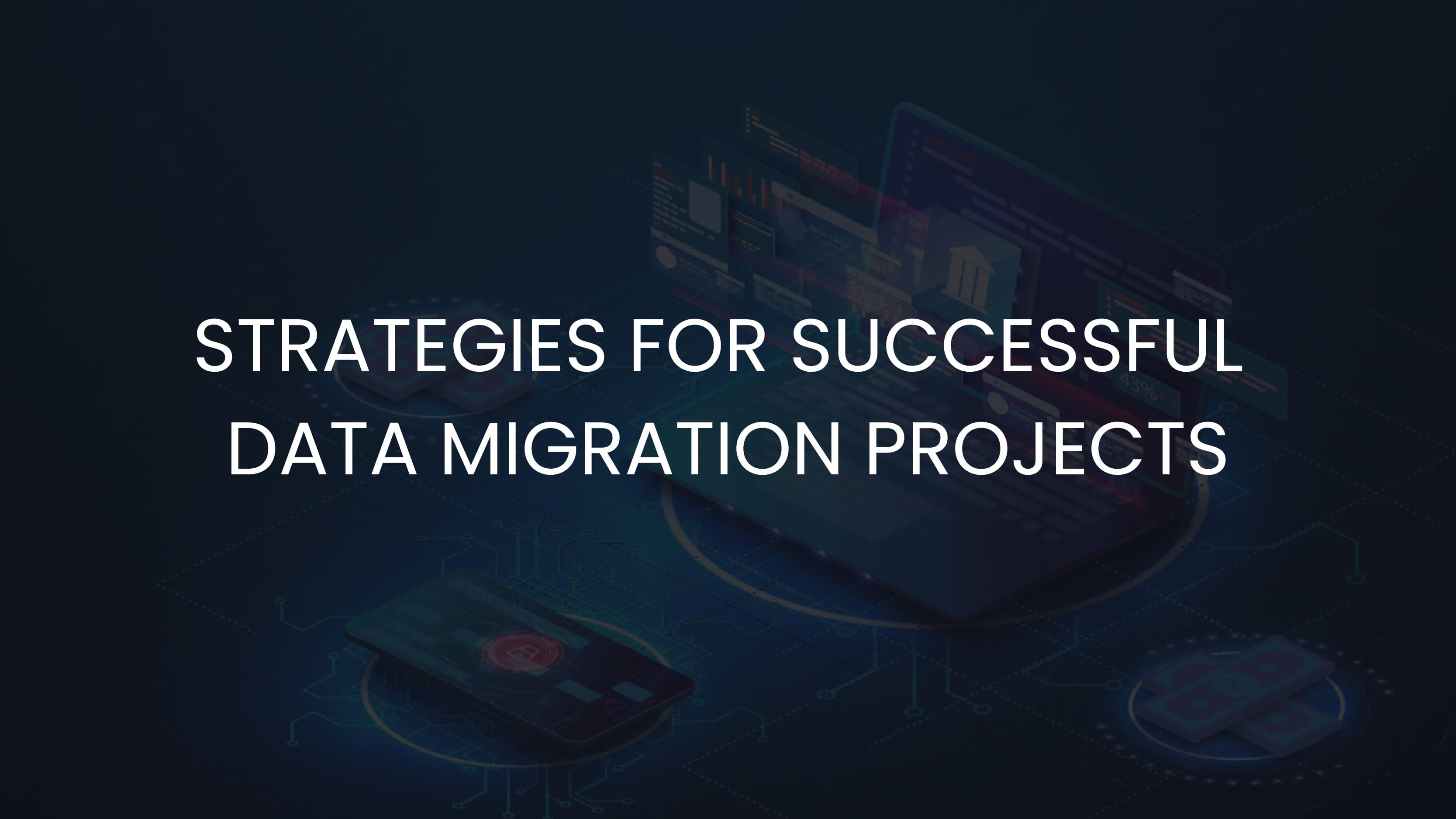Strategies for Successful Data Migration Projects
In the digital era, businesses frequently need to move data from one system to another. Whether it's upgrading to a new software platform, merging with another company, or migrating to the cloud, data migration projects are essential but complex undertakings. Effective data migration strategies and robust project management are crucial to ensure a smooth transition. This article explores the key elements of successful data migration projects, emphasizing data cleansing, risk mitigation, and compliance with regulatory requirements.
Understanding Data Migration
Data migration involves transferring data between storage types, formats, or computer systems. This process can be fraught with challenges, including data loss, compatibility issues, and downtime. Therefore, a strategic approach to data migration is necessary to mitigate these risks and ensure data integrity.
Key Data Migration Strategies
1. Comprehensive Planning
Successful data migration begins with thorough planning. This phase involves:
Defining Objectives: Clearly outline what the migration aims to achieve, such as improved performance, reduced costs, or enhanced data security.
Scope Definition: Identify the data sets to be migrated, including their sources and destinations.
Resource Allocation: Assign roles and responsibilities to team members and allocate the necessary resources, including tools and technologies.
2. Data Assessment and Profiling
Before migration, it's crucial to assess the data quality and profile it to understand its structure, content, and dependencies. This step helps in identifying data quality issues and dependencies that need to be addressed before the actual migration.
Data cleansing is the process of correcting or removing inaccurate, incomplete, or irrelevant data from the data set. This step is vital to ensure the accuracy and reliability of the migrated data. Data cleansing includes:
Duplicate Removal: Eliminating redundant records.
Data Correction: Fixing inaccuracies and inconsistencies.
Standardization: Ensuring data is in a consistent format.
4. Risk Mitigation
Risk mitigation strategies are essential to handle potential issues that may arise during the migration process. Key risk mitigation steps include:
Backup Plans: Ensure that there are reliable backups of all data before starting the migration process.
Testing: Conduct thorough testing in a staging environment to identify and resolve potential issues.
Contingency Plans: Develop contingency plans to address any unforeseen issues quickly.
5. Compliance Requirements
Compliance with regulatory and industry standards is critical during data migration projects. This includes:
Data Privacy: Ensuring that sensitive data is protected and that privacy regulations, such as GDPR or HIPAA, are adhered to.
Audit Trails: Maintaining an audit trail of the data migration process to demonstrate compliance.
Data Retention Policies: Adhering to data retention policies to ensure that data is kept or disposed of in line with regulatory requirements.
6. Incremental Migration Approach
An incremental approach to data migration, where data is migrated in small batches, can minimize risks and allow for better management of the process. This method helps in identifying and resolving issues on a smaller scale before they escalate.
7. Use of Automated Tools
Utilizing automated data migration tools can significantly enhance efficiency and accuracy. These tools can automate repetitive tasks, reduce manual errors, and provide better control over the migration process.
Effective Project Management for Data Migration
1. Stakeholder Engagement
Engaging stakeholders throughout the migration process is crucial. This includes:
Regular Updates: Keeping stakeholders informed about the progress and any issues encountered.
Feedback Loops: Establishing channels for stakeholders to provide feedback and address concerns.
2. Clear Communication
Clear and consistent communication is essential for coordinating efforts and ensuring that everyone is on the same page. This includes:
Project Meetings: Regular project meetings to discuss progress and address any issues.
Documentation: Maintaining comprehensive documentation of all processes, decisions, and changes.
3. Training and Support
Providing adequate training and support to the team and end-users ensures a smooth transition. This includes:
Technical Training: Training the IT team on new systems and processes.
User Training: Educating end-users on how to use the new system effectively.
4. Monitoring and Evaluation
Continuous monitoring and evaluation are necessary to ensure the success of the data migration project. This includes:
Performance Metrics: Establishing key performance indicators (KPIs) to measure the success of the migration.
Post-Migration Review: Conducting a post-migration review to identify lessons learned and areas for improvement.
Case Studies of Successful Data Migration
Case Study 1: Cloud Migration for a Retail Company
A leading retail company successfully migrated its data to a cloud-based ERP system using a phased approach. By conducting extensive data profiling and cleansing, the company ensured data integrity. Automated migration tools helped streamline the process, and continuous monitoring minimized downtime.
Case Study 2: Merging Financial Data Post-Acquisition
After acquiring another financial firm, a bank needed to integrate the acquired firm's data with its own. The bank used comprehensive planning and incremental migration strategies to manage the complex data sets. Compliance with financial regulations was maintained through meticulous audit trails and data retention policies.
Conclusion
Successful data migration projects require meticulous planning, strategic execution, and effective project management. By focusing on data migration strategies, such as comprehensive planning, data cleansing, risk mitigation, and adherence to compliance requirements, businesses can achieve seamless and efficient data transitions. Real-world case studies highlight the effectiveness of these strategies in delivering successful outcomes. As businesses continue to evolve, robust data migration practices will remain integral to maintaining data integrity and operational efficiency.




